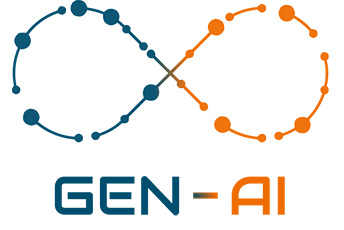Medical Research
Introduction
The API /virtualbot/analisys_image_report/ is a powerful tool for the Medical Research sector, allowing researchers working with large datasets of medical images to process them at scale. By identifying patterns in various pathologies and supporting clinical studies, this API facilitates the mass and automated analysis of images, speeding up the research process and contributing to the advancement of medicine. It is important to note that the API does not store images or clinical data, ensuring the privacy and security of the information.
How the API /virtualbot/analisys_image_report/ Works
Endpoint: POST /virtualbot/analisys_image_report/
Input Parameters:
- Medical Images: A .zip file containing a set of images to be analyzed (X-rays, CT scans, MRIs, etc.).
- Image Metadata: Information associated with the images in JSON format, which may include:
– Demographic Data: Age, gender, ethnic origin, etc.
– Relevant Clinical Information: Previous diagnoses, treatments, risk factors, etc.
– Labels or classifications (if available).
- User Instructions: A JSON specifying the type of analysis requested. For example, identify specific patterns, compare patient groups, detect anomalies, etc.
Example Request:
{
"user": "researcher@example.com",
"type": "research",
"analysis": "Analyze the images to identify common patterns in patients with and without disease X."
}
Process:
- The API receives the .zip file with the images and associated metadata.
- It uses the metadata to contextualize the analysis and group the images according to specific criteria.
- It analyzes the images at scale, identifying patterns, anomalies, or relevant features for the study.
- It generates a detailed report that includes general findings, comparisons between groups, and statistical visualizations.
Output:
A report in JSON format summarizing the findings, providing statistics, and including recommendations or preliminary conclusions if relevant.
Example JSON Response:
{
"result": {
"patterns_identified": "Common patterns of pulmonary opacities were detected in 75% of patients with disease X, compared to 10% in the control group.",
"statistical_analysis": {
"p_value": 0.001,
"confidence_interval": "95%"
},
"visualizations": "Graphs and tables attached in PDF format.",
"conclusions": "There is a significant correlation between the presence of pulmonary opacities and disease X."
}
}
Applications in Medical Research
- Mass Analysis of Medical Images to Identify Disease Patterns in Population Studies
– Description: The API can process large volumes of medical images to identify common patterns or significant differences in specific populations. This is useful in epidemiological and public health studies.
– Benefit: Enables researchers to detect trends and risk factors at the population level, contributing to understanding and preventing diseases.
- Support in Hypothesis Validation in Clinical Trials through Automated Image Analysis
– Description: During clinical trials, the API can analyze images of participants to assess the efficacy of treatments or interventions, identifying changes or responses in medical images.
– Benefit: Facilitates hypothesis validation by providing objective and quantitative analyses, speeding up the research process and reducing biases.
- Identification of Visual Biomarkers
– Description: The API can assist in the detection of visual biomarkers in medical images, which are measurable indicators of biological processes or pathologies.
– Benefit: Contributes to the development of more accurate and personalized diagnostics, as well as the discovery of new therapeutic targets.
- Automation of Annotation and Segmentation Processes
– Description: The API can automate the annotation and segmentation of images, tasks that are often labor-intensive and time-consuming when performed manually.
– Benefit: Increases efficiency and consistency in image processing, allowing researchers to focus on analysis and data interpretation.
Practical Examples of API Use
Example 1: Population Study on Lung Diseases
Request:
– Instructions: “Analyze 10,000 chest X-rays to identify the prevalence of pulmonary opacities associated with exposure to environmental pollutants.”
API Response:
{
"result": {
"patterns_identified": "Pulmonary opacities were detected in 30% of the images. A higher prevalence was observed in areas with high pollution levels.",
"statistical_analysis": {
"correlation": 0.8,
"significance": "High"
},
"conclusions": "There is a strong correlation between exposure to environmental pollutants and the presence of pulmonary opacities."
}
}
Example 2: Clinical Trial to Evaluate a New Oncology Treatment
Request:
– Instructions: “Compare MRI images before and after treatment in patients with brain tumors to evaluate tumor size reduction.”
API Response:
{
"result": {
"changes_detected": "65% of patients showed a tumor size reduction greater than 20%.",
"statistical_analysis": {
"p_value": 0.005,
"mean_difference": "15% reduction"
},
"conclusions": "The treatment shows efficacy in reducing tumor size in a significant proportion of patients."
}
}
Advantages of Using the API in Medical Research
- Scalability and Efficiency
– Description: Capability to process large volumes of images quickly.
– Benefit: Accelerates data analysis, allowing faster progress in research projects.
- Objective and Consistent Analysis
– Description: Provides uniform analyses, reducing inter-observer variability.
– Benefit: Improves the reliability of results and reproducibility of studies.
- Cost Reduction
– Description: Automates tasks that would otherwise require significant time and human resources.
– Benefit: Optimizes resource use, allowing investment in other critical areas of research.
- Support in Decision Making
– Description: Provides data and analyses that can guide decisions in the design and development of clinical studies.
– Benefit: Improves research quality and increases the likelihood of success in trials.
- Confidentiality and Security
– Description: Does not store images or personal data, ensuring participant privacy.
– Benefit: Complies with ethical and legal regulations, facilitating regulatory compliance.
- Customization and Flexibility
– Description: Allows adjustments to analyses according to specific study needs.
– Benefit: Adapts to various types of research and pathologies.
Summary
The API /virtualbot/analisys_image_report/ is an innovative tool for the Medical Research sector, facilitating the mass analysis of medical images and the identification of patterns in various pathologies. By automating image processing and providing detailed analyses, the API supports researchers in population studies, hypothesis validation in clinical trials, and biomarker discovery. Its use improves efficiency, reduces costs, and contributes to significant advancements in the understanding and treatment of diseases, all while ensuring the confidentiality and security of data.


